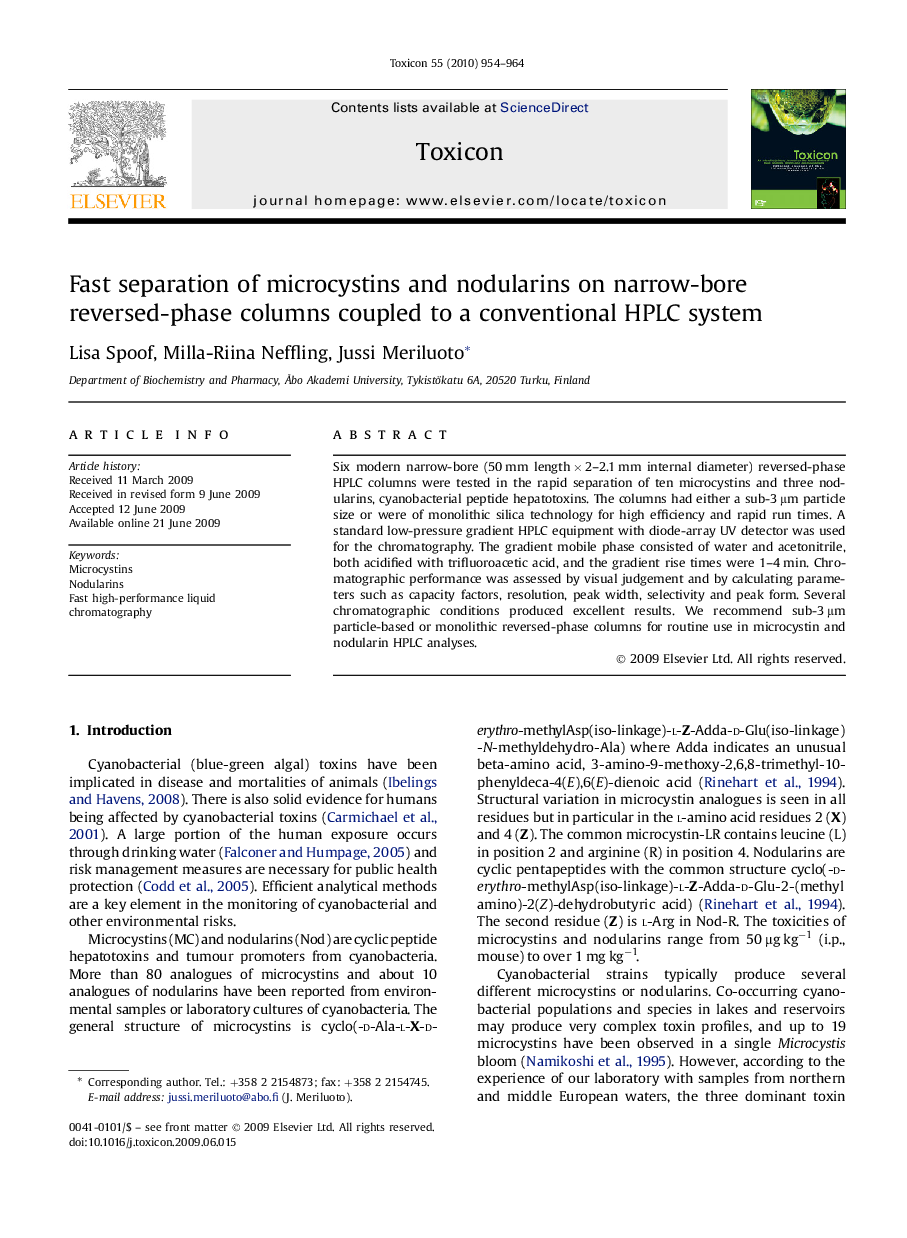| Article ID | Journal | Published Year | Pages | File Type |
|---|---|---|---|---|
| 2066401 | Toxicon | 2010 | 11 Pages |
Six modern narrow-bore (50 mm length × 2–2.1 mm internal diameter) reversed-phase HPLC columns were tested in the rapid separation of ten microcystins and three nodularins, cyanobacterial peptide hepatotoxins. The columns had either a sub-3 μm particle size or were of monolithic silica technology for high efficiency and rapid run times. A standard low-pressure gradient HPLC equipment with diode-array UV detector was used for the chromatography. The gradient mobile phase consisted of water and acetonitrile, both acidified with trifluoroacetic acid, and the gradient rise times were 1–4 min. Chromatographic performance was assessed by visual judgement and by calculating parameters such as capacity factors, resolution, peak width, selectivity and peak form. Several chromatographic conditions produced excellent results. We recommend sub-3 μm particle-based or monolithic reversed-phase columns for routine use in microcystin and nodularin HPLC analyses.
